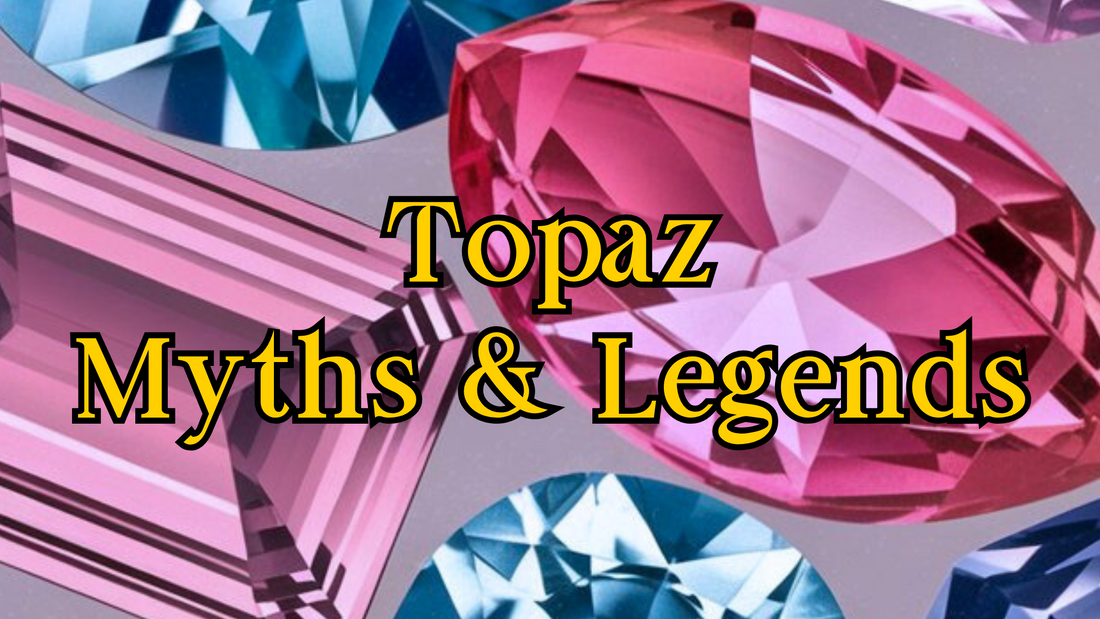
The Myths and Legends of Topaz
Throughout history, gemstones have been woven into the fabric of myths and legends, imbued with divine powers and celestial connections. Among these is topaz, a gem that has long been linked to strength, protection, and the brilliance of the sun. But as with many ancient gemstones, its true story is often obscured by mistaken identity and shifting historical narratives.
 The Sun God’s Gift: Topaz and Ra
The Sun God’s Gift: Topaz and Ra
It is said that Ra, the mighty sun god, placed golden stones within the earth as a sign of his eternal light, a gift to mortals that would allow them to carry a fragment of his power. These radiant gems, shimmering like the sun itself, became a source of awe and reverence among the ancient Egyptians. Priests and pharaohs alike adorned themselves with topaz, believing that wearing the stone ensured their alignment with Ra’s divine favour and granted them protection from harm.
To the Egyptians, gemstones were more than mere adornments—they were celestial relics, imbued with sacred meaning. Topaz, with its golden glow, was a direct link to Ra’s radiance, an embodiment of his strength encased in crystal form. Whether set into ceremonial jewellery or carved into sacred artifacts, it was revered as a powerful talisman, a beacon of divine energy carried by those who sought the sun god’s blessing.
 The Luminous Stones of Topazios
The Luminous Stones of Topazios
One of the most fascinating legends surrounding topaz originates from a small island in the Red Sea, known in ancient times as Topazios (modern-day Zabargad). This mysterious island was famed for its glowing gemstones, which, according to legend, could be seen shining faintly in the darkness. Miners seeking these rare treasures would search the island at night, marking the glowing spots where the stones lay hidden, only to return in daylight to excavate their luminous bounty.
However, mining on Topazios was not always so simple. The island was said to be infested with deadly snakes, making the pursuit of these precious gems a perilous endeavour. The legend goes, it was only when King Ptolemy II, pharaoh of Egypt, decreed that the island be cleared of serpents that the miners were able to extract the gemstones without fear. With the island now safe for workers, Topazios became a renowned source of gemstones, providing treasures that were reserved for the pharaohs and the highest-ranking members of Egyptian society.
 A Case of Mistaken Identity?
A Case of Mistaken Identity?
As enchanting as these legends are, there is a lingering mystery surrounding the true identity of the gemstones found on Topazios. While ancient texts refer to these luminous stones as topaz, modern gemologists now believe that they were, in fact, a greenish-yellow variety of peridot. This confusion is a common theme in gemstone lore, as early civilizations often classified stones based on colour rather than their mineral composition.
This case of mistaken identity highlights one of the biggest challenges in tracing the myths and legends of gemstones. The same stone might have been called by different names across various cultures and eras, while entirely different gemstones could have been grouped together simply because they shared a similar hue. This is why tracking the true history of gemstones can be so tricky—what was once thought to be a tale of topaz may well have been the story of peridot all along.
Despite this mix-up, the myths and legends surrounding topaz remain an enduring part of gemstone history. Whether linked to the power of Ra, the treasure troves of Topazios, or the glowing stones of the night, the stories of this golden gem continue to capture the imagination, adding another layer of intrigue to the already fascinating world of ancient gemstones.
